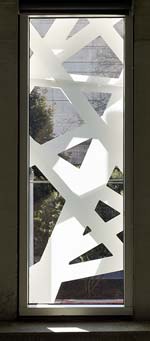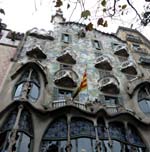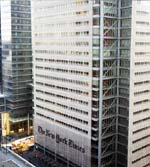
|

|
|
Home Site Search Contact Us Subscribe
|
|
A Filtered View #5: Jet Fuel The perfect client offers up enough fuel to run the design jets at the most optimum level. By Charles F. Bloszies, FAIA April 28, 2016 Editor’s note: This is the fifth in a series of musings by San Francisco-based architect Charles F. Bloszies, FAIA.
A number of years ago a developer-client revealed to a colleague the reason he enjoyed working with our firm was because we were not “racing our design jets all of the time.” Much to the surprise of both, I said that, like most architects, what we were really looking for in a client was a reliable source of jet fuel for that very purpose. We were not retained for more work from the former, and we were never engaged by the latter – eventually I figured out why.
As a profession, we architects don’t always grasp that our creativity needs to be financed. Unfortunately, we have acquired a reputation of not being able to deliver value, or at least value in the eyes (and wallets) of our clientele. Yet as problem solvers, we are uniquely positioned to provide designs that do have value; ones that are efficient and beautiful. The key is to work for people who understand and appreciate both, the true purveyors of jet fuel.
Of course, finding sources of jet fuel is not easy. Many architects strive to create a symphony, but can only find clients who are looking for a jingle. And sometimes we misread the client’s resources and desires, playing John Cage to a country music fan. The key is to match vision with talent. The perfect client offers up enough fuel to run the design jets at the most optimum level.
Patrons are nice – in fact, some of the best architecture has been created because a financier recognized the value an architect is able to deliver. Design jets hum along efficiently. The remarkable work of Antoni Gaudí would not have been possible without the patronage of Eusebi Guell – a pre-jet age source of the highest grade of jet fuel. Some might think Gaudí blasted off out of control, which is probably what developers fear when they view the architect as a self-serving artist with no governor to keep the engines on track. But a visit to Barcelona quickly reveals how Gaudí’s work was a reflection of his time and culture, not to mention that millions of visitors pay homage to his creations yearly.
It would be easy to slip into a diatribe about how we architects are responsible for deciphering a never-ending myriad of changing codes and regulations without commensurate fees. Inadequate compensation is a constant professional gripe – you heard the one about the architect who won the lottery? Kept the practice going until the money ran out. The truth in this old saw is the real reason we love the profession: it gives us the opportunity to create something meaningful at a large scale. But to be satisfying at the highest level, it does take jet fuel.
“Yes if you wanna run cool, you got to run, On heavy, heavy fuel.” HEAVY FUEL, Mark Knopfler, Dire Straits, 1991
Charles F. Bloszies, FAIA, is an architect, structural engineer, and writer – and principal of a practice in San Francisco focused on complex urban infill projects. He is the author of Old Buildings, New Designs – Architectural Transformations, published in 2011 by Princeton Architectural Press and now in its third printing.
See also:
A Filtered View #1: Buckminster Fuller (Not Al Gore) Invented the Internet
A Filtered View #2: Ubiquitous Stuff - Why is Most of it so Ugly? Maybe Apple should design all of this stuff; or maybe Philippe Starck.
A Filtered View #3:
Socially Progressive, Architecturally Conservative: A San Francisco Paradox
A Filtered View #4: Where is Sustainability's Flying Buttress? It may take a decade or so before photovoltaics and other energy-producing technologies find an aesthetic foothold, but for architecture to survive - they must.
|
(click on pictures to enlarge)  Matthew Millman Photography A filtered view  Charles F. Bloszies Casa Batllo: One of the few buildings in Barcelona not commissioned by Gaudí’s purveyor of jet fuel, Eusebi Guell.  Aol.com/finance Too much jet fuel: Trump’s Taj Mahal casino in Atlantic City.  LoopNet.com No jet fuel: a banal strip mall in Los Angeles.  ©Bruce Damonte via Sasaki.com Not quite enough jet fuel on a college campus (UC Davis Gallagher Hall and Conference Center by Sasaki Associates).  ©Jill Fehrenbacher for Inhabitat Just the right amount of jet fuel (New York Times Building by Renzo Piano Building Workshop with FXFOWLE Architects). |
© 2016 ArchNewsNow.com